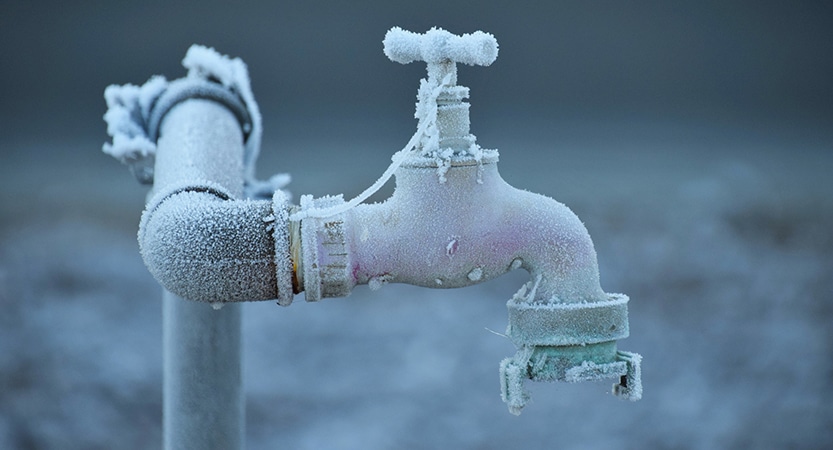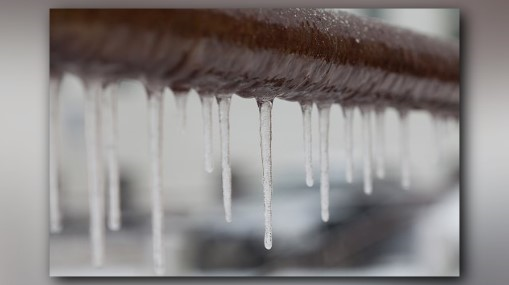Preventing Pipes from Cold Weather: Top Strategies
Preventing Pipes from Cold Weather: Top Strategies
Blog Article
We've come across this great article relating to Winter Plumbing Precautions: Preventing Frozen Pipes listed below on the internet and believe it made good sense to talk about it with you on this site.

Cold weather can wreak havoc on your plumbing, especially by freezing pipelines. Here's just how to avoid it from happening and what to do if it does.
Introduction
As temperature levels decrease, the threat of frozen pipelines boosts, potentially resulting in costly repairs and water damage. Recognizing just how to prevent frozen pipelines is crucial for house owners in cool environments.
Recognizing Icy Pipelines
What triggers pipelines to ice up?
Pipes freeze when subjected to temperatures listed below 32 ° F (0 ° C) for expanded periods. As water inside the pipes ices up, it increases, putting pressure on the pipeline walls and potentially triggering them to break.
Dangers and damages
Icy pipes can bring about water system disruptions, residential property damages, and expensive repair work. Burst pipes can flood homes and cause considerable architectural damage.
Indications of Frozen Piping
Determining frozen pipes early can prevent them from bursting.
How to recognize icy pipes
Try to find reduced water circulation from faucets, unusual smells or sounds from pipes, and noticeable frost on revealed pipelines.
Prevention Tips
Insulating vulnerable pipelines
Cover pipelines in insulation sleeves or use warm tape to protect them from freezing temperatures. Focus on pipelines in unheated or exterior locations of the home.
Home heating strategies
Maintain interior rooms effectively warmed, particularly areas with plumbing. Open cupboard doors to allow cozy air to flow around pipes under sinks.
Safeguarding Outside Plumbing
Garden tubes and exterior taps
Detach and drain pipes yard hoses prior to wintertime. Mount frost-proof faucets or cover outdoor faucets with insulated caps.
What to Do If Your Pipelines Freeze
Immediate actions to take
If you think frozen pipelines, keep faucets open to alleviate pressure as the ice thaws. Make use of a hairdryer or towels soaked in hot water to thaw pipes gradually.
Long-Term Solutions
Architectural modifications
Think about rerouting pipelines away from exterior wall surfaces or unheated areas. Include additional insulation to attic rooms, basements, and crawl spaces.
Upgrading insulation
Invest in high-quality insulation for pipes, attics, and walls. Appropriate insulation aids preserve constant temperature levels and minimizes the danger of frozen pipelines.
Conclusion
Avoiding frozen pipes needs proactive actions and fast reactions. By comprehending the reasons, indications, and preventive measures, homeowners can shield their plumbing during winter.
5 Ways to Prevent Frozen Pipes
Drain Outdoor Faucets and Disconnect Hoses
First, close the shut-off valve that controls the flow of water in the pipe to your outdoor faucet. Then, head outside to disconnect and drain your hose and open the outdoor faucet to allow the water to completely drain out of the line. Turn off the faucet when done. Finally, head back to the shut-off valve and drain the remaining water inside the pipe into a bucket or container. Additionally, if you have a home irrigation system, you should consider hiring an expert to clear the system of water each year.
Insulate Pipes
One of the best and most cost-effective methods for preventing frozen water pipes is to wrap your pipes with insulation. This is especially important for areas in your home that aren’t exposed to heat, such as an attic. We suggest using foam sleeves, which can typically be found at your local hardware store.
Keep Heat Running at 65
Your pipes are located inside your walls, and the temperature there is much colder than the rest of the house. To prevent your pipes from freezing, The Insurance Information Institute suggests that you keep your home heated to at least 65 degrees, even when traveling. You may want to invest in smart devices that can keep an eye on the temperature in your home while you’re away.
Leave Water Dripping
Moving water — even a small trickle — can prevent ice from forming inside your pipes. When freezing temps are imminent, start a drip of water from all faucets that serve exposed pipes. Leaving a few faucets running will also help relieve pressure inside the pipes and help prevent a rupture if the water inside freezes.
Open Cupboard Doors
Warm your kitchen and bathroom pipes by opening cupboards and vanities. You should also leave your interior doors ajar to help warm air circulate evenly throughout your home.

As a keen reader on Prevent Frozen Pipes , I think sharing that post was beneficial. In case you enjoyed reading our blog entry please remember to pass it around. Many thanks for your time spent reading it.
About Report this page